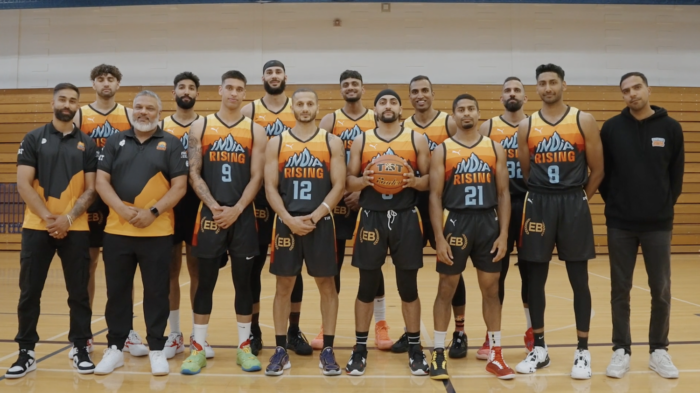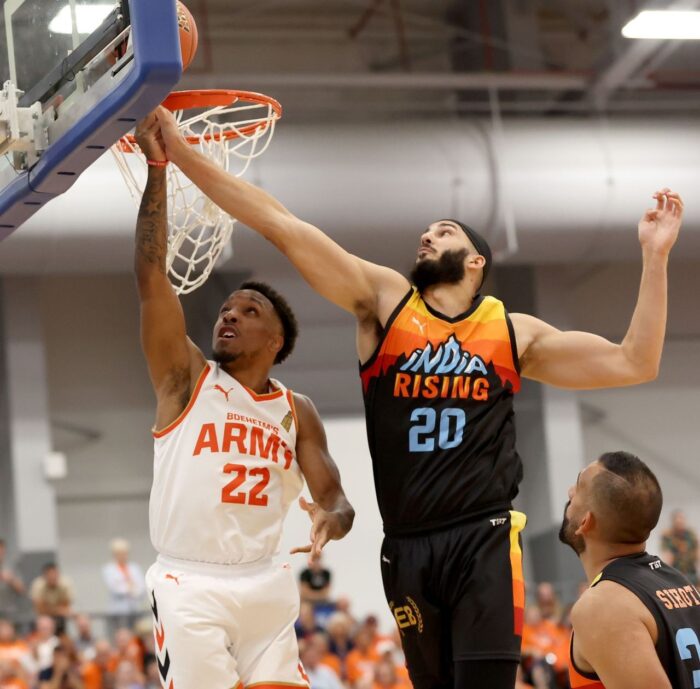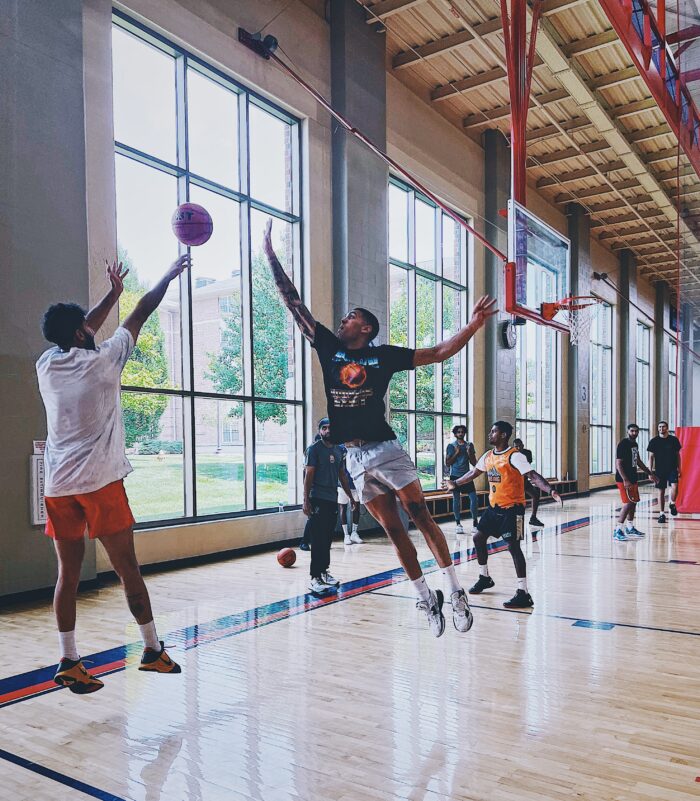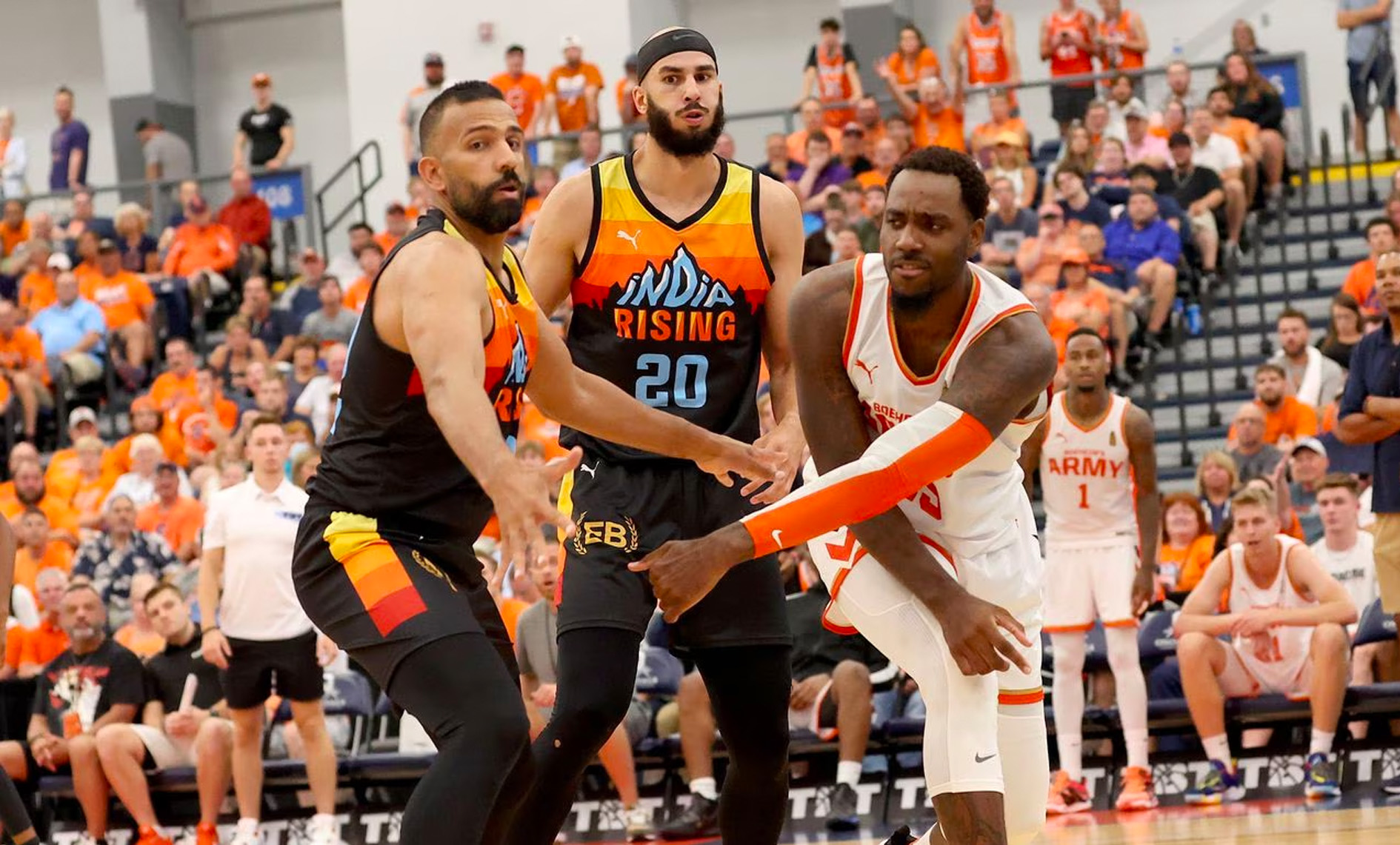Despite the immense popularity of basketball among South Asians and, especially, the South Asian diaspora, little representation has been seen in major leagues like the NBA. Here to finally change things up is India Rising, a basketball team made up of some of the best India-origin players around the world and on a mission “to showcase to the world that brown ballers exist.”
Established through non-profit organization Brown Ballers, which fosters community and team-building among brown athletes through scholarships and charity work. The team concept was created by Gautam Kapur, an ex-NBA employee who saw a lack of representation for Indian-origin players. The team is made up of athletes who are doctors and engineers by day, and ballers by night.

Although basketball is the most popular sport in the Indian American and Indian Canadian diaspora, and has quite a fan following in India itself (where there are over 10 million basketball players alone), South Asian representation has been minimal on larger platforms, including the NBA.
As Kunal Patel, the executive producer behind an upcoming documentary on the team, puts it, “The struggle these players face is two-fold; the mainstream doesn’t think they can offer anything to professional sports like basketball, and our culture would rather they ‘train’ for higher paying jobs. While I absolutely cannot fault the rationale, I personally believe the ‘keep your head down and work hard’ mentality only serves to (possibly) bring you money — what it doesn’t bring you though, and what is infinitely more powerful, is representation. And money does not buy you representation — especially in America, you have to influence culture. Who does that? Entertainers and athletes.”

Last year, India Rising competed in ESPN’s The Basketball Tournament (TBT), which saw 64 teams play in a single-elimination format, with a prize of $1 million, making it the highest stakes basketball tournament in the world.
Earlier this summer, the team played TBT again, opening the tournament with a historic upset victory over the team Red Scare, thanks to a whopping 29 points from player Tajinder Lall. This, despite being the No. 8 seed playing the No. 1 seed in their home arena. Other key players include Sukhmail Mathon, Kiran Shastri, and Venky Jois.
Patel shared, “We had very few supporters in Dayton, there were constant boos, we weren’t even able to practice in the arena — the pressure was incredible and this team rose to the challenge. If you didn’t know about them before the game, they certainly put themselves on the map after. One of our players was approached by two small brown children in the Phoenix airport who were telling their parents ‘that’s the Indian team that was playing on TV’ — that’s what makes this a historic win.”
Although India Rising didn’t win TBT, as the game’s Twitter posted, “They lost a game, but India Rising inspired countless Indian hoopers around the world.”
“It’s an idea — that brown folks can also play ball with the best of them and be athletic role models for a population that numbers in the billion(s) around the world and yet is overlooked in many spaces, including sports. People need to pay attention because it is one thing to train to play professional basketball — it is another thing to do this within a culture that does not overtly support you.”
Kunal Patel, executive producer ‘India Rising’
To bring more of a spotlight to India Rising and its goal, Patel collaborated with Kapur to create a documentary — named India Rising — that demonstrates how the team came together, and traces their journey loss at 2022’s TBT to their big comeback moment in the 2023 competition. It also includes interviews with prominent South Asians sharing why having representation on the court is important. Shubhangi Shekhar also produces, and directs.
In addition, said Patel, “It shows the real adversity these guys and Gautam face, and how they’ve managed to keep their cool amidst lack of community support, lack of finances, and even a lack of faith within at times. At a base level, it also shows that we are more than just Bollywood.”
The team behind the doc are currently in talks with streaming networks in hopes of a soon but as yet to-be-determined release date.
“There is a stereotype that has been at play for a long time that brown folks are mild-mannered, timid, they work hard and they don’t ruffle any feathers. We’re doctors, engineers, lawyers. We’re all under six feet. Basketball is both a sport of finesse and one of aggression; every time these players step on the court, they are showing that we aren’t just going to be rolled over. … These guys are superheroes in a very real way for every kid out there. These guys are various shades of [brown], but their influence is outsized. … The feeling of not belonging transcends colour and we’re hoping that it’s not just brown people who take pride in this team, but everyone.”
Kunal Patel, executive producer ‘India Rising’
India Rising’s goal is already proving effective. Team alum Aryan Sharma has been playing in Canada’s university basketball league, while fellow alum Josh Sharma is in the British basketball league.
Although it’s been long overdue, the timing feels right. Over the last decade, the NBA has been increasingly working to grow its name and fanbase in India, with plans to develop the sport there — largely because they know just how big a market the country is. In 2015, when Satnam Singh became the first Indian to be drafted into the NBA after he was selected by the Dallas Mavericks, it seemed some finally turned onto the idea that there might not only be an audience to be found in South Asia, but talent, too.

That’s why, just last year, Bollywood actor Ranveer Singh was announced as the league’s brand ambassador for India, and why he has been seen more than a few times buddying up courtside with Shaquille O’Neal. It’s also why the country is home to an NBA training academy, and why — in 2019 — the NBA finally played two preseason games in India.
“It’s fantastic and historic to have these two games here,” said league commissioner Adam Silver at the time. “But in the larger scope of developing a business, it’s a very small step. You really have to go into it knowing that this is going to be a long-term project.”
It isn’t just basketball that’s seeing a little more brown representation. Just last month, in the Major League Baseball Draft, 17-year-old shortstop Arjun Nimmala was the 20th overall pick, selected by the Toronto Blue Jays. In other words, the Florida-born and raised athlete could very well become the first player of Indian descent to make it to the MLB, which has also historically seen very little South Asian representation.
Like the NBA, the MLB has been working to grow baseball and the brand in India, which they view as an “exciting growth market,” according to a press release. And this past May, Baseball United, the first-ever professional baseball league focused on the Middle East and Indian subcontinent (and co-owned by MLB Hall of Famers Barry Larkin and Mariano Rivera), announced Mumbai will soon be home to its first franchise.
All of which is to say, a whole lot of new competition is about to head in the way of a few major leagues.
Like this post? Follow The RepresentASIAN Project on Instagram, TikTok and YouTube to keep updated on the latest content.








